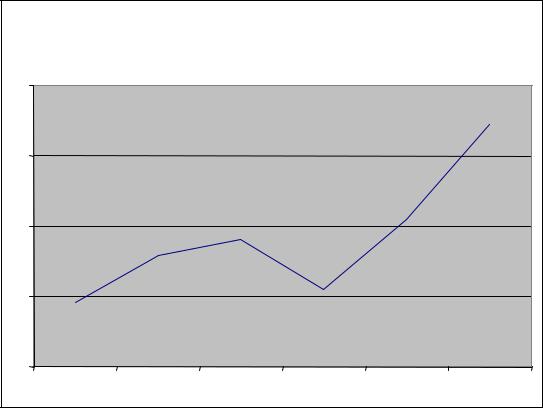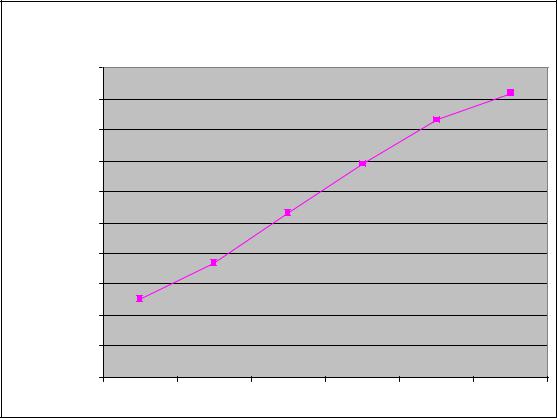
- •TABLE OF CONTENTS
- •Figures and tables
- •2.1 The need for guiding concepts
- •2.2 When in Rome, do as the Romans do
- •2.3 Fences can rise and fall (for different purposes and at different times)
- •2.4 Border management: the state’s responsibility to protect
- •2.5 Collecting ‘customs’ to fund the state
- •2.6 Borders matter – on both sides of the fence
- •2.7 The nature of state powers at the border
- •2.8 The evolution in border management – from walls to flows
- •2.9 Summary
- •3.1 The future of the state (and hence, its borders)
- •Figure 1: Member States of the United Nations
- •3.1.1 Many more states this century?
- •3.1.2 Far fewer states this century?
- •3.2 Problems that are both within and beyond the border
- •3.2.1 The global economy: not all boats are rising with the economic tide
- •Table 1: Indicators of widening inequalities
- •3.2.2 Climate change and the environment
- •3.2.3 Pandemics and border control
- •3.3 ‘Flow’
- •Figure 2: Expansion of Trade
- •3.4 The rise and rise of multi-national corporations (MNCs)
- •3.5 Population Pressures and Flows
- •Figure 3: Population of the World 1950-2050 (medium variant)
- •3.5.1 The Demographic Revolution
- •3.5.2 Urbanisation
- •3.5.3 Travellers
- •3.6 The pace of technological change
- •3.7 Summary
- •4.1 From brawn to brain
- •4.2 Moving towards high assurance, light touch
- •Figure 4: Forms of intrusion by border agencies
- •4.3 The impact on facilitation
- •4.3.1 Managing increased flows of trade
- •4.3.2 Complying with multiple trade agreements as regionalism continues
- •4.3.3 Setting common standards and procedures
- •4.3.4 Technological advances
- •4.3.5 But technology is available to all, not just to Customs
- •4.3.6 Public-private partnerships will be more important
- •4.4 Impacts on ‘protection’
- •4.4.1 E-Commerce
- •4.5 Modernising (or not)
- •4.5.1 Delays to flow cost a government just as they do the private sector
- •4.6 Making choices – the quick and the dead
- •4.6.1 Moving on the spectrum
- •4.6.2 Modernising with limited resources
- •Figure 5 Balancing resources against risk
- •Figure 6: Consent-risk balances to border control
- •4.6.3 One size does not fit all
- •Figure 7: The impact on flow of different approaches to protecting the border
- •Figure 8: Proportion of tax revenue from Customs
- •4.6.4 Looking ahead
- •4.6.5 Laying the groundwork
- •4.6.5.1 Obtaining and maintaining political will
- •4.6.5.2 Integrity
- •4.6.5.3 Simplification and standardisation
- •4.6.5.4 Cooperation
- •Figure 9: Working with stakeholders
- •4.6.5.5 Integrated border management
- •4.7 Summary

Figure 2: Expansion of Trade36
Two 'waves' of globalisation merchandise exports, per cent of GDP in 1990 prices
20 |
|
|
|
|
|
15 |
|
|
|
|
|
10 |
|
|
|
|
|
5 |
|
|
|
|
|
0 |
|
|
|
|
|
1870 |
1913 |
1929 |
1950 |
1973 |
1998 |
Note: Exports and GDP in 1990 prices.
The sorts of factors that would reduce this flow across the next 50 years or so are simple to describe: major environmental or health scares that saw the sudden re-establishment of high ‘border fences’; breakdowns of the world political/trading system as a result of war or some other disaster; and in terms of current threats, the most obvious would be a major new pandemic.
3.4 The rise and rise of multi-national corporations (MNCs)
The expansion of trade has been, and will continue to be linked to the expanding influence of MNCs. MNCs account for the majority of world trade in goods and services, and foreign direct investment.37 The first and largest MNCs have been European and American, but as globalisation has advanced, Indian and Chinese firms have risen and are now challenging their rich-world rivals. Following the Indian and Chinese MNCs, Brazilian and Russian MNCs are also starting to make their mark.38 The rise and prominence of MNCs is directly linked to global economic integration, as MNCs globalise their supply chain and drive for ‘just-in-time’ production and delivery.
For our purposes, the key point here is that global trade has of course given rise to global traders, and the easy movement of capital has seen the growth of hugely wealthy and powerful corporations that together control significant proportions of the world economy. Because they operate in separate countries, generally with domestic subsidiaries, the scale of this dominance is not readily apparent to most states. The relevance of this will become clearer in discussing what we see as the inevitability of public-private cooperation at the border across the next decades.
3.5 Population Pressures and Flows
Over the past few years, the world’s population has undergone a number of remarkable transitions. In addition to a large and still growing global population of humans on the planet (see Figure 3
19

below), growing population mobility, a demographic revolution in age distribution, and urbanisation will influence cross-border flows of goods and people.
Figure 3: Population of the World 1950-2050 (medium variant)39
Population of the World 1950-2050
|
10000000 |
|
|
|
|
|
|
9000000 |
|
|
|
|
9191287 |
|
|
|
|
|
|
|
|
8000000 |
|
|
|
8317707 |
|
|
|
|
|
|
|
|
|
7000000 |
|
|
6906558 |
|
|
thousands |
6000000 |
|
|
|
|
|
5000000 |
|
5294879 |
|
|
|
|
|
|
|
|
|
||
4000000 |
3698676 |
|
|
|
|
|
|
|
|
|
|
||
|
|
|
|
|
|
|
|
3000000 |
|
|
|
|
|
|
2535093 |
|
|
|
|
|
|
2000000 |
|
|
|
|
|
|
1000000 |
|
|
|
|
|
|
0 |
|
|
|
|
|
|
1950 |
1970 |
1990 |
2010 |
2030 |
2050 |
3.5.1 The Demographic Revolution
The world’s demographic revolution refers to the remarkable transition from a state of high birth and death rates to one characterised by low birth and death rates. The outcome has been a rapid and large growth in the number and proportion of older persons – to a degree previously unseen in the history of civilisation and predicted by the UN to continue well into the coming centuries.
Most significantly, this trend is most marked in the wealthiest economic countries and regions. Looking ahead, developing regions will have a more balanced age distribution by the middle of the 21st century, and the less developed regions will still have the bulk of their populations between the ages of 20 and 45 years old.40 A ‘grey ‘ population in wealthy countries and a large working age population in less developed countries will drive flows of migrant labourers across borders.41
3.5.2 Urbanisation
Urbanisation is one of the most remarkable global demographic trends of the previous and present century. Towns and cities are growing today at unprecedented rates, and are setting economic, social, political, cultural and environmental trends globally, both good and bad. In 1950, one-third of the world's people lived in cities. Just 50 years later, this rose to one-half and will continue to grow to two-thirds, or six billion people, by 2050.
Urbanised centres are the hubs of much national production and consumption. Megacities, of which there are now fourteen housing more than 10 million people, are concentrated hubs, and act as the
20
